Pisto Manchego
By Lee Jackson ↣ Published on: May 7, 2023
Pisto Manchego, Spain’s version of Ratatouille, is a healthy, hearty celebration of vegetables. A sweet, smoky and tangy tomato sauce brings together an array of tender veg, crowned with the most perfect crisp fried egg.
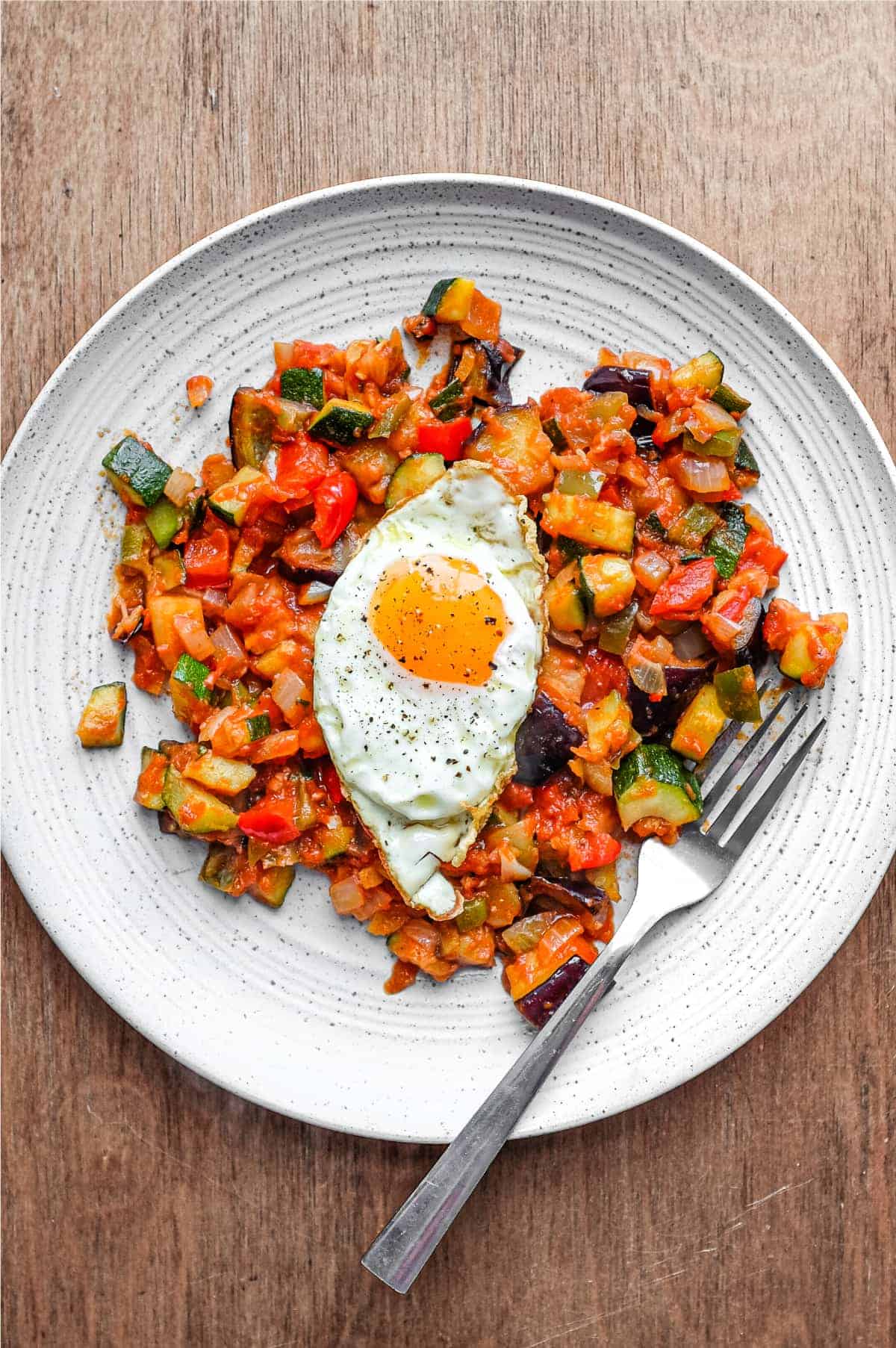
Pisto Manchego is a celebration of vegetables and I'm all for its wonderful texture and taste. Fresh, hearty and healthy it combines all the magic of eggplant, zucchini, bell pepper, onion and tomato.
I enjoy mine as a breakfast dish or as part of a larger Spanish dinner offering or small plate tapas. It's wonderful at room temperature over bread or hot topped with the customary fried egg. It's filling, packed with flavour and a great source for your 5-a-day.
You just know that Pisto is working wonders behind the scenes as much as it is in front - look how beautiful it is!
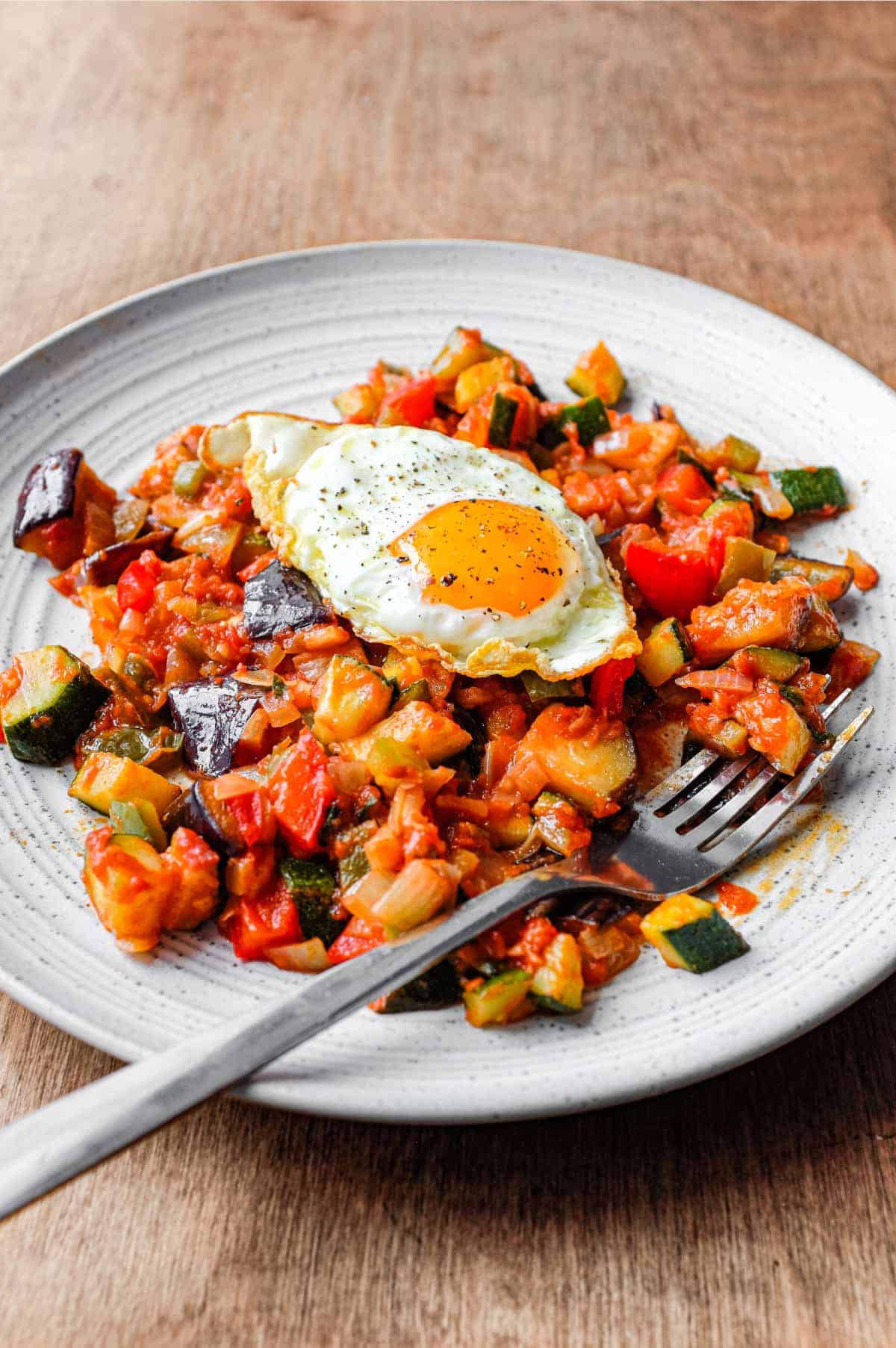
What is Pisto Manchego?
Pisto Manchego is a Spanish dish much like France's ratatouille, a combination of eggplant, zucchini, onion and bell peppers in a tomato sauce. There are many dishes throughout Europe and beyond that share similar preparations.
Pisto Manchego gets its name from the region of La Mancha, Spain with it originated. In Spain, it also goes by the names Tumbet (a similar preparation which also features potatoes) from Majorca and Samfaina from the Catalan region.
Pisto means 'mash' which refers to the softness of the vegetables in that they are tender and easily mashable.
Pisto manchego can be enjoyed in many ways, as a hot or cold offering. An appetiser, main course, side dish or tapas. Many Spaniards (and me) enjoy it with a fried egg on top.
Why it works?
It's filling and healthy - for those meat-free days when all I crave are vegetables, this is the perfect antidote. A luxurious blend of my favourites, eggplant and zucchini alongside even more vegetable goodness.
A fried egg - I don't need to be asked twice whether I want a fried egg on anything, so to know that it's traditional to top pisto with one is all I need to know. I fry my eggs, Spanish-style - in a lot of olive oil until they're super crisp on the bottom and super runny on top. Utter perfection!
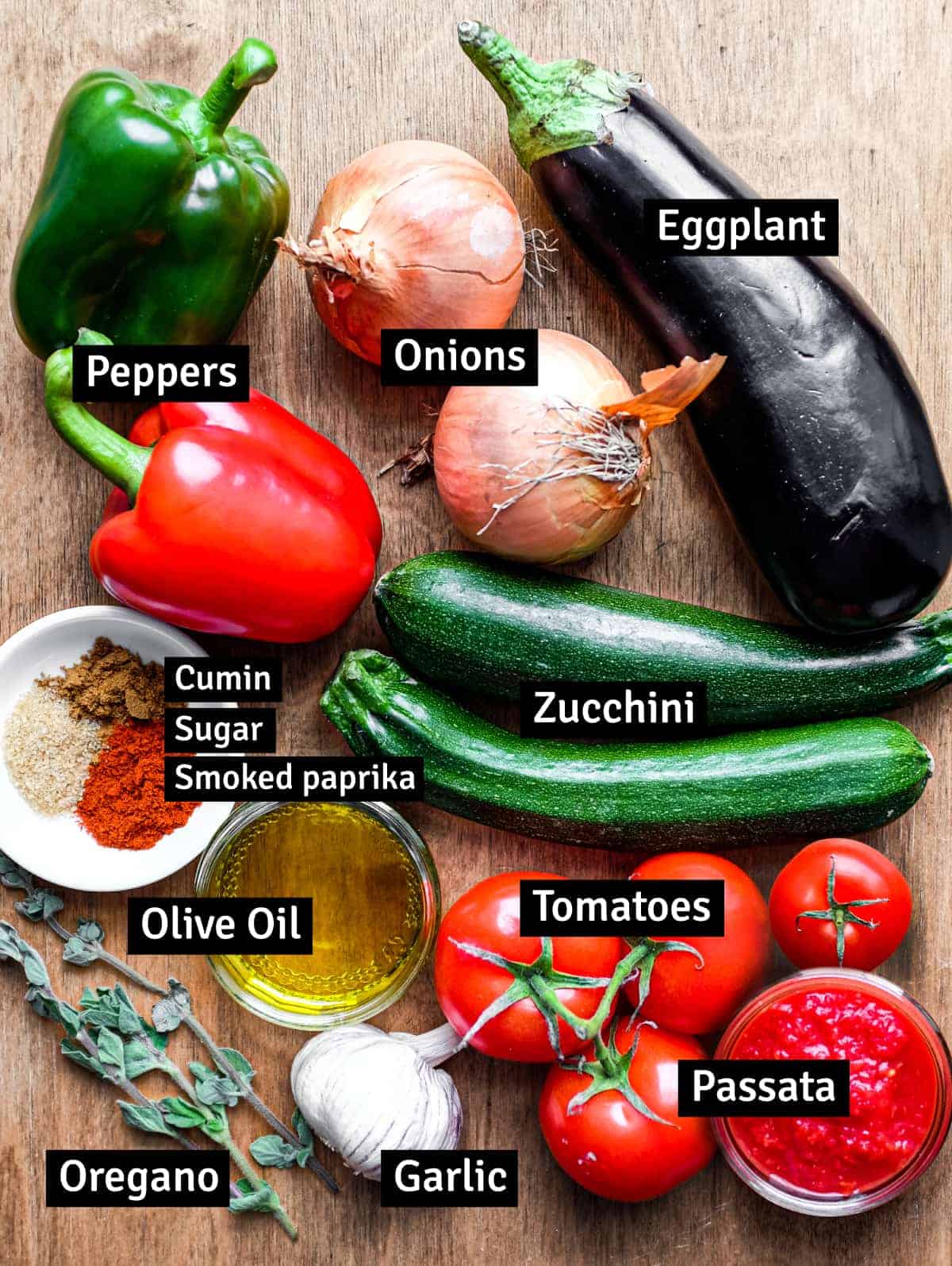
Stuff You'll Need
The ingredients for Pisto Manchego are simple and affordable. Here are the key flavours.
- Diced vegetables - onions, zucchini, eggplant and bell peppers (green and red)
- Garlic - adds a little aromatic backbone to the flavour
- Herbs & Spices - oregano, smoked paprika and cumin bring a little Spanish flair to proceedings
- Tomatoes - I use a combination of fresh and passata (polpa). I use fresh to keep the flavour light as using all passata can often make the dish too acidic or tomato forward. I want to taste all those veg.
- Extra virgin olive oil - there's a fair bit of olive oil in the dish but it's necessary in creating the rich, creamy texture. In Spain, there's even more (much more), so just run with it!
Step by Step
To ensure all the vegetables are cooked to perfection, I like to cook them separately. You can cook them all together, but I often find this creates a mushy texture as some veg cooks more quickly than others.
Cooking separately means I have two (or more) large pans on the go at once to save time. You can use one pan and just work your way through the ingredients - you decide.
- Step 1 - Salt the eggplant. This will extract the water and make the eggplant avoid it becoming greasy when frying. Leave it for 10 minutes while you start on the other ingredients.
- Step 2 - Fry the onions for a while until they're soft. I add a little water to the onions and let them simmer until it's all evaporated then add a little more and repeat until they're soft and tender.
- Step 3 - Add the garlic and stir briefly to cook out the rawness.
- Step 4 - Add the cumin and paprika and stir briefly. I then remove this from the pan and start on my veg.
- Step 5 - I add the fresh tomatoes (I've peeled these, removed the seeds and chopped) along with the passata and a little water and simmer for 10 minutes until it's reduced.
- Steps 6-7 - Meanwhile, I fry the zucchini and bell peppers separately until they're soft.
- Steps 8-9 - I rinse and pat dry the eggplant then fry until soft.
- Steps 10-11 - all my veg are ready, I can now add them to the sauce.
- Step 12 - I simmer the veg for 10 more minutes and that's it! All done.
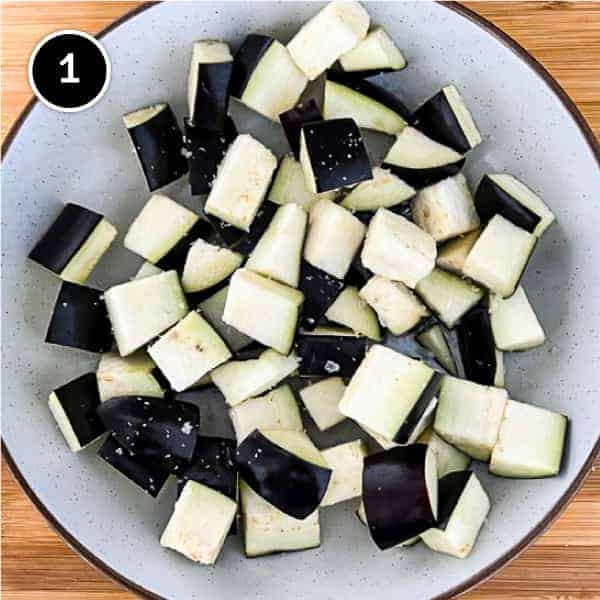
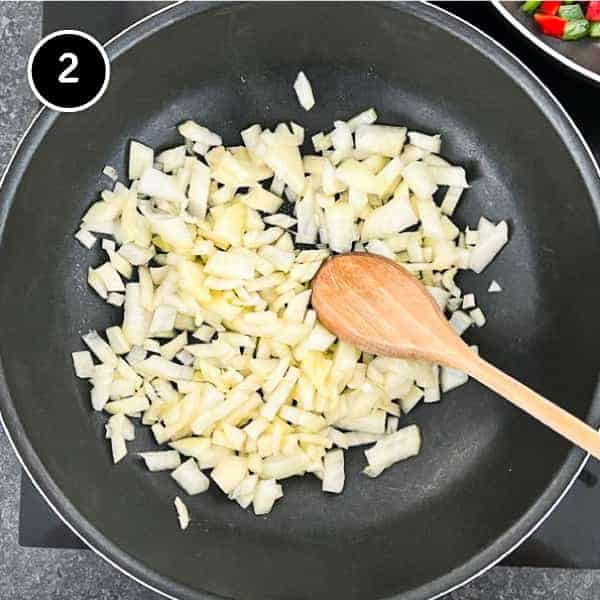
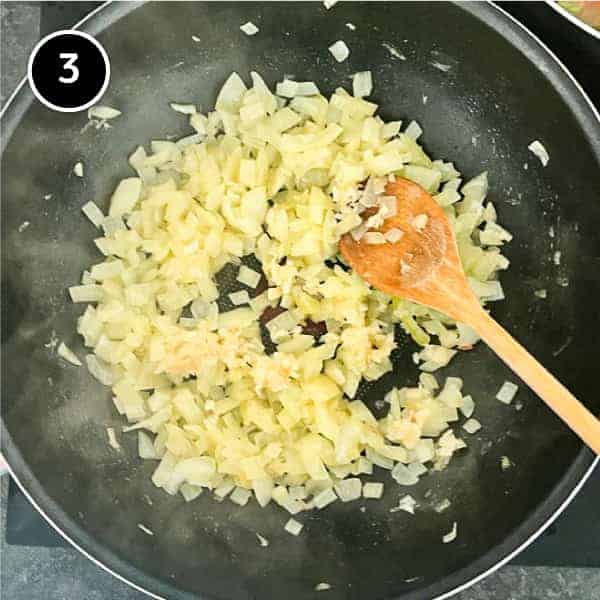
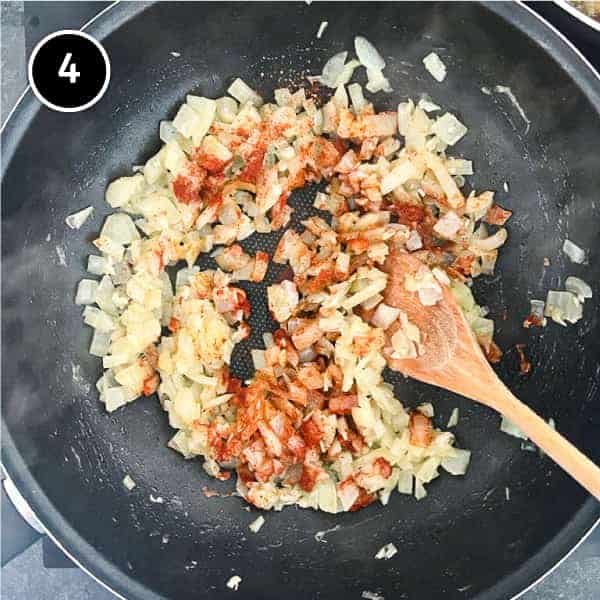
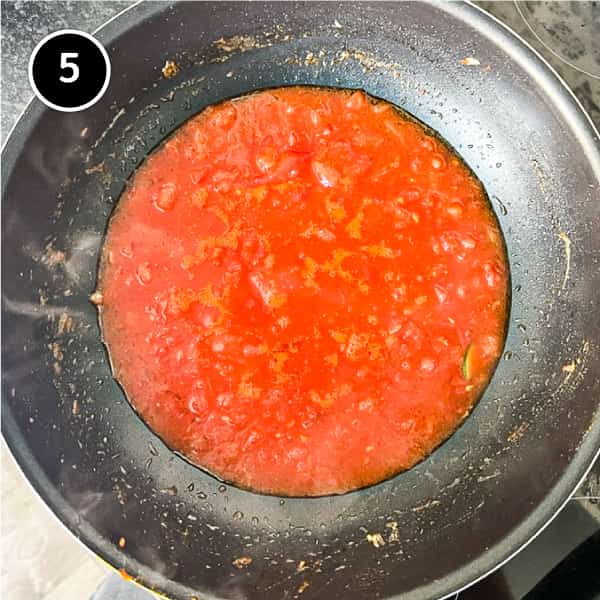
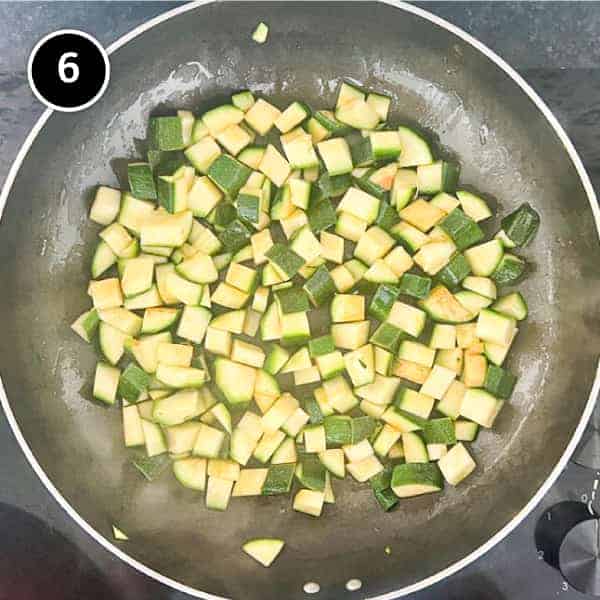
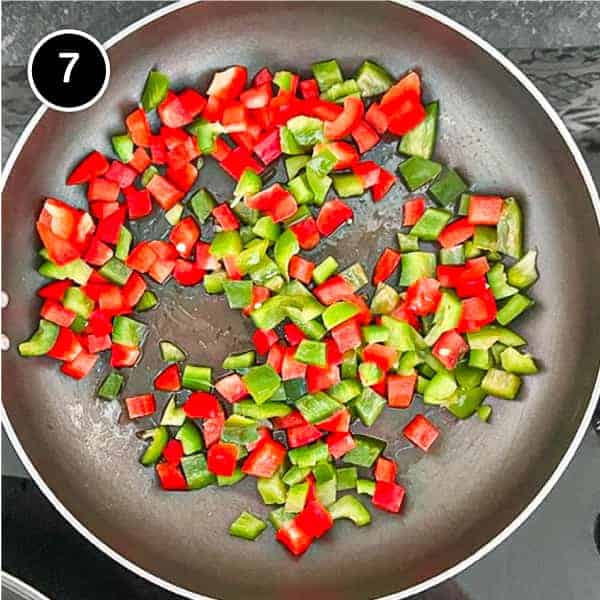
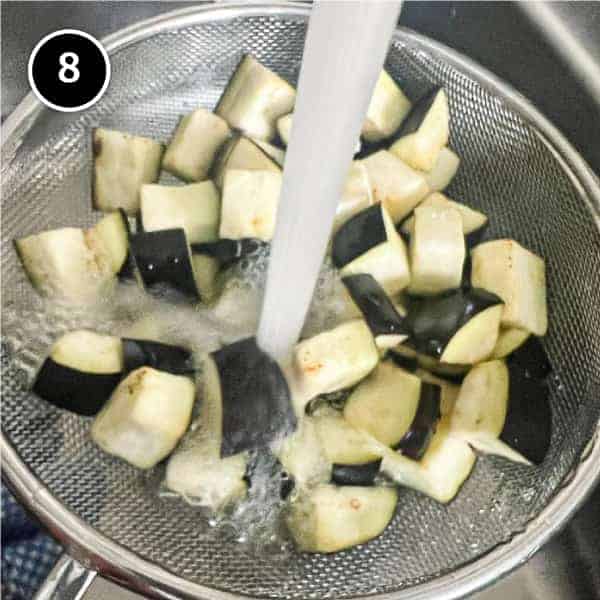
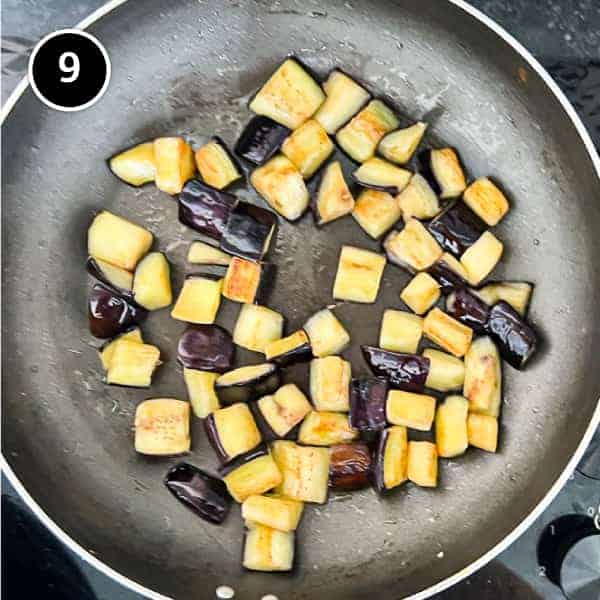
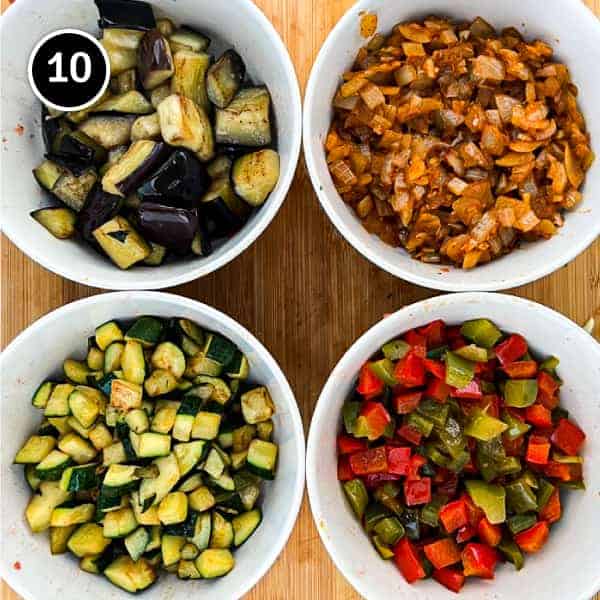
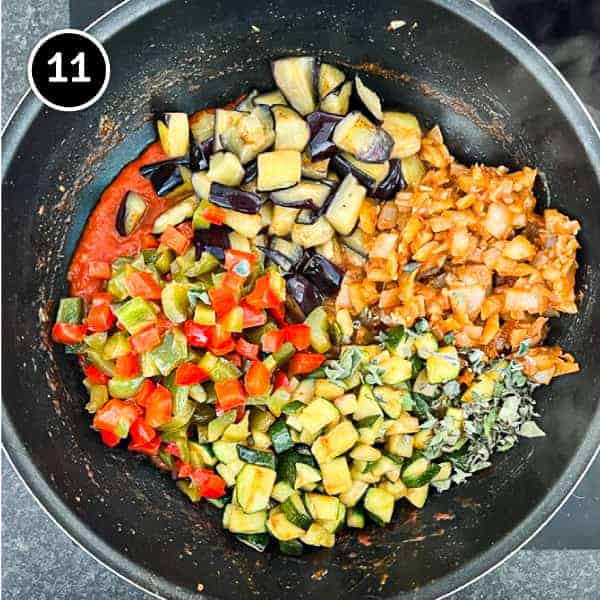
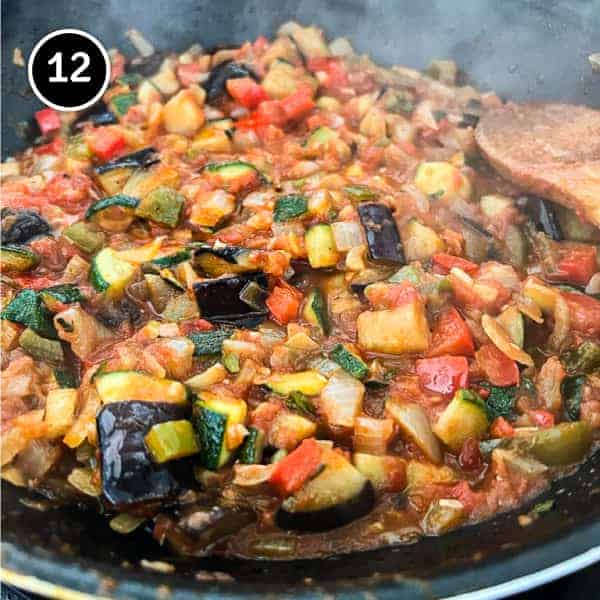
Pro Tips
- Cooking separately - It can seem like a pain, but through trial and error I've learned that some veg cooks more quickly and breaks down before others have cooked. This creates for a mushy and disjointed flavour. Cooking separately ensures you can taste everything in their own right at the perfect stage of tenderness.
- A touch of sherry vinegar at the end can add a wonderful tangy note to the sauce. I always add a little, but this is an optional stage.
- Eggs are not mandatory, so this dish is 100% vegan without the eggs. I'm a fan of eggs, so can't look past serving myself pisto without one, but you decide for yourself.
- Runny or dry? - Personally I like less of a runny texture to my Pisto, but if you want a more stew-like consistency, add more tomato passata and a little more water to create a texture that suits you. Traditionally Pisto can be served in many consistencies.
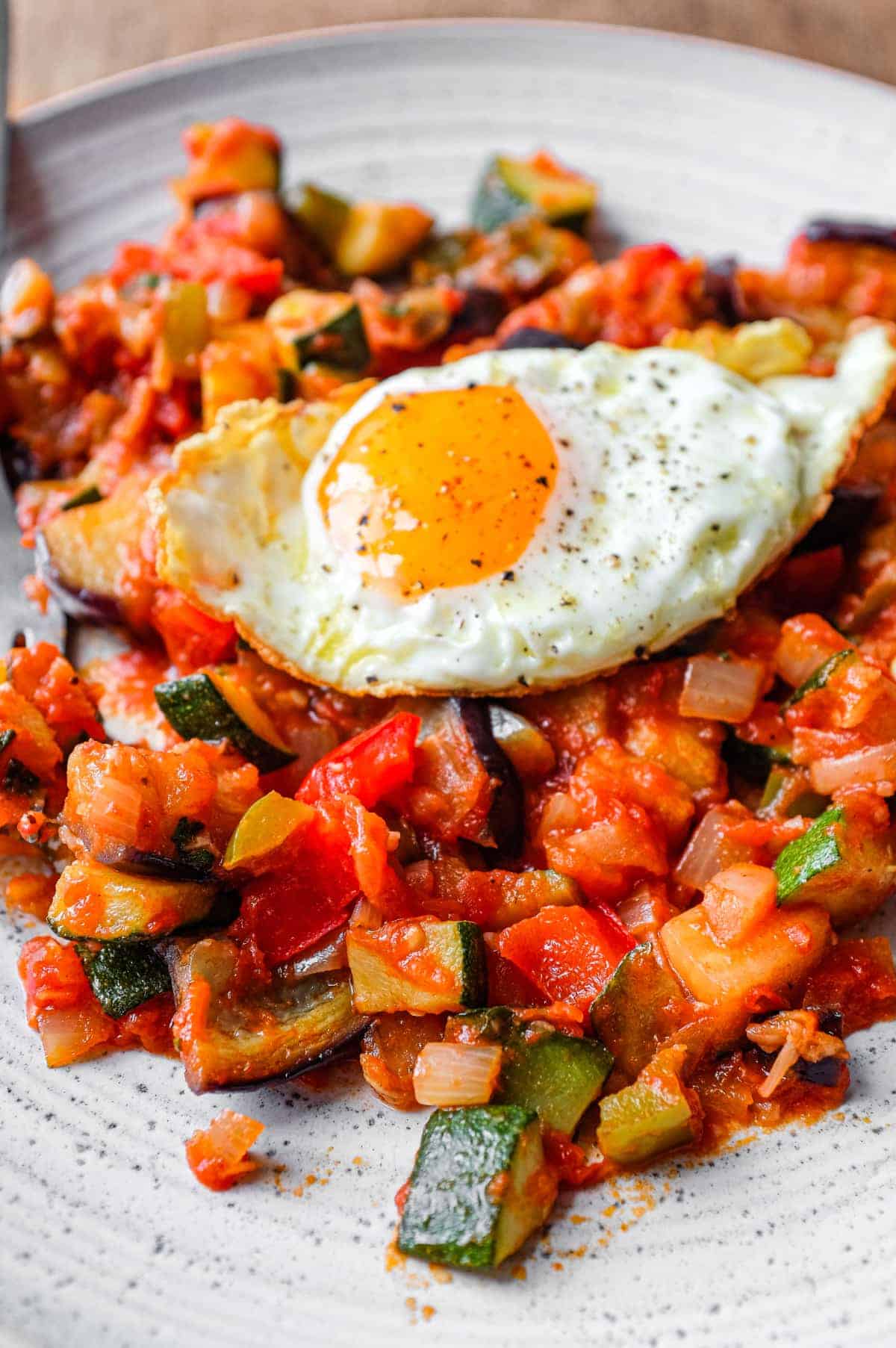
Serving & Storage Suggestions
Serving - I like to serve mine in many ways. Here are a few suggestions
- As a breakfast, warmed and topped with a fried or poached egg.
- As a topping for a crusty toasted bread
- As a warm or cold side dish for meats, fish or poultry
- As a small plate tapas alongside other Spanish tapas dishes
Fridge - Leftovers are great in the fridge for 3-4 days in airtight containers. I like to bring them up to room temperature for the best flavour. You can also reheat in the microwave until hot. Add a little water to avoid the sauce completely drying out.
Freezer - Pisto freezes well in airtight containers or bags. Be sure to defrost thoroughly and bring up to room temperature for serving. You can reheat in the microwave until hot from defrosted or frozen. I like to add a little water to avoid the sauce drying up completely.
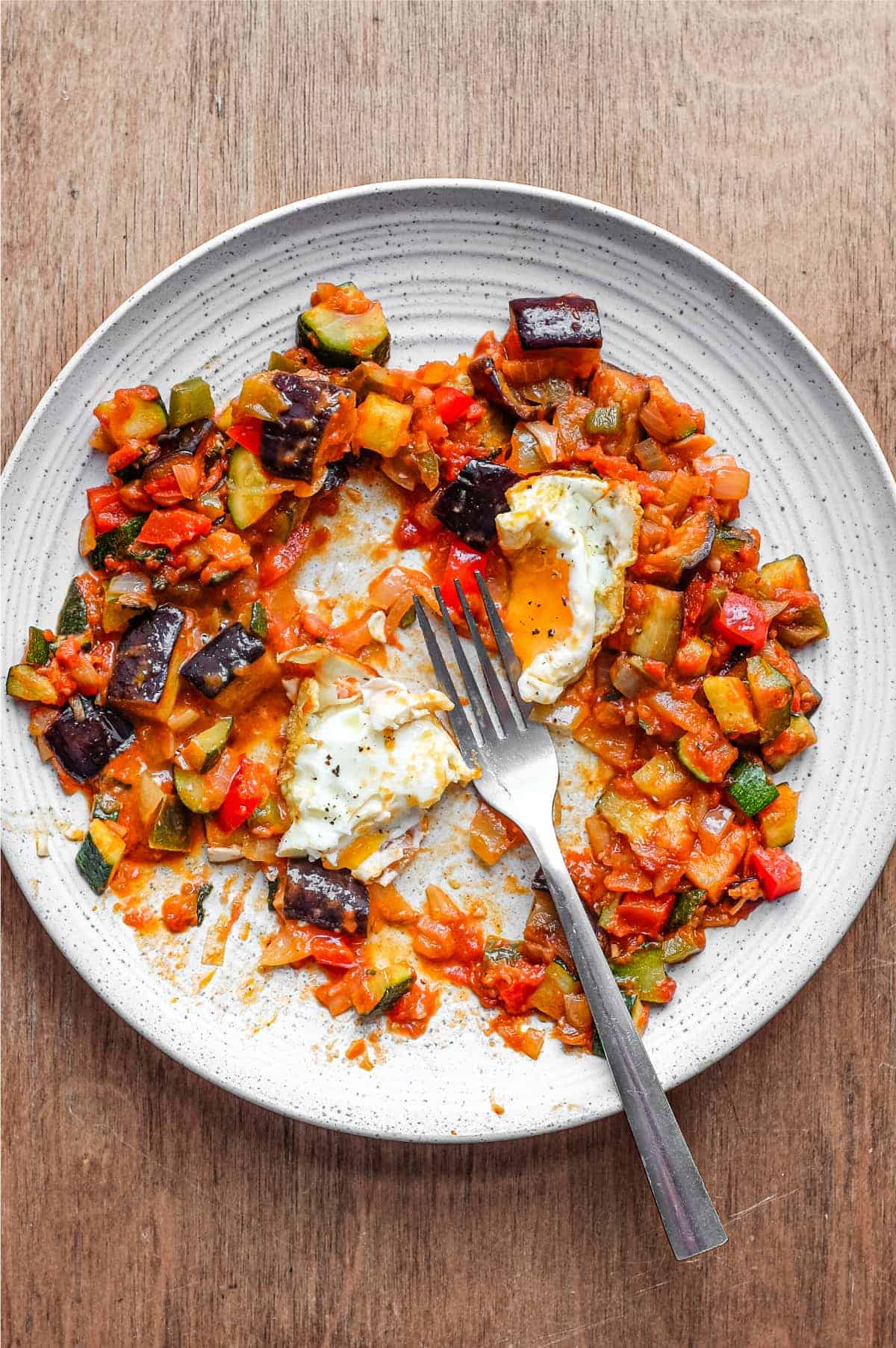
Ready to get cooking?
I hope you'll discover the delights of Pisto and enjoy it as much as I do. I prefer it over Ratatouille as it has that lightly smoky Spanish personality from the smoked paprika and gives me full permission to enjoy a crisp fried egg too!
Pisto Manchego is a simple and special recipe to have in your repertoire, a hearty and wholesome addition to any healthy diet. Enjoy!
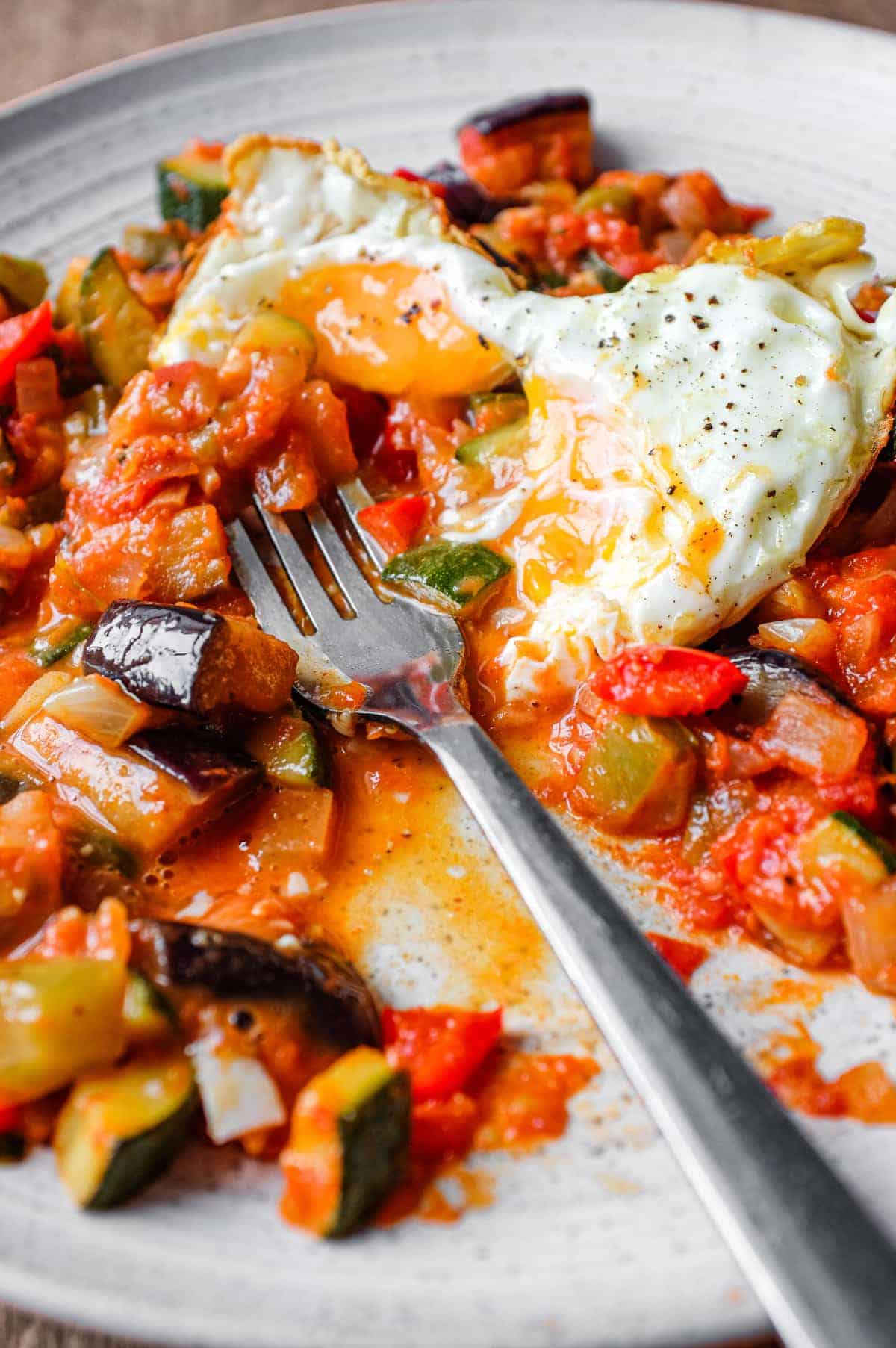
More delicious Spanish recipes
If you liked this recipe for Pisto Manchego, I'm sure you'll love more of my favourite Spanish recipes.
Any Questions? (FAQ)
Have a question about Pisto Manchego? Let me know in the comments.
What is Spanish Pisto Manchego?
Spanish Pisto Manchego is a traditional dish from the region of Castilla-La Mancha in Spain, made with sautéed vegetables such as tomatoes, onions, peppers, zucchini, and eggplants, often served as a side dish, tapas or as a main course.
Pisto vs Ratatouille?
Pisto and Ratatouille are one and the same. They each feature the same ingredients. Spanish Pisto features a few spices like paprika and cumin which set it apart from the French Ratatouille.
How is Spanish Pisto Manchego typically served?
Spanish Pisto Manchego is typically served hot or at room temperature, either as a side dish or as a main course. It can be eaten on its own or with other dishes, such as rice or bread. It is often served with a fried egg on top or with cured ham or cheese.

33 oils, vinegars and sauces every home cook should have.
Take your International recipes out of this World with my 33 oils, vinegars & sauces every home cook should have ➞
This recipe uses affiliations and may receive a commission based on your activity (link clicks). Learn more.
Ingredients
- 1 eggplant (medium, diced)
- 1 tsp sea salt
- ½ cup olive oil (approximately)
- 2 onions (diced)
- 2 garlic cloves (crushed)
- 1 tsp smoked paprika
- ½ tsp cumin
- 4 tomatoes (peeled, de-seeded and then chopped)
- 1 cup tomato passata
- 1 tsp sugar
- 2 zucchini (medium sized, diced)
- 1 red bell pepper (de-seeded and diced)
- 1 green bell pepper (de-seeded and diced)
- 1 tsp fresh oregano (chopped)
- salt & pepper
- 1 tbsp sherry vinegar (optional)
- Fried eggs (optional)
Instructions
- Sprinkle the sea salt over the diced eggplant and toss around to coat everything. Leave for 10 minutes.
- Meanwhile, Add around two tablespoons of oil to a large deep frying pan and add the onion and fry gently for 2-3 minutes Add 1/2 cup water and simmer for another 5-6 minutes until all the water has evaporated and the onion is soft.
- Add the garlic and fry for 1 minute
- Add the cumin and paprika and fry for 1 minute then remove from the heat and add to a bowl.
- While the onion is frying add the tomatoes, passata, sugar and 1 cup of water to a second large pan and bring to a simmer. Simmer gently for 10 minutes until it's reduced and thick.
- Meanwhile use your first pan and add another two tablespoons of oil then fry the zucchini for 10 minutes until soft. Remove to a bowl.
- Add another two tablespoons of oil and fry the mixed bell peppers for 10 minutes adding a little water half way through and cooking until it's evaporated. Remove to a bowl.
- Rinse the eggplant with cold water in a sieve or colander and then set aside.
- Add 2 more tablespoons to the frying pan and add the eggplant. Fry this for 7-8 minutes until soft. Remove to a bowl.
- You should have four bowls of vegetables, which you will tip into the tomato sauce along with the fresh oregano. Season well with salt and pepper and and the pisto is ready.
- You can serve pisto hot or at room temperature.
Optional
- At this stage you can also add the sherry vinegar for a tangier flavour if you're using.
- In plenty of oil, fry the eggs until they're crisp on the base and still runny on top.
- Arrange some pisto on a plate or shallow bowl and top each portion with a fried egg. Then serve.
Notes
- It may seem like an inconvenience, but from my experience, cooking vegetables separately is crucial to avoid overcooking some and undercooking others, resulting in an unappealing texture and flavor. Cooking them separately ensures that each vegetable is cooked to the perfect tenderness and retains its unique flavor.
- For an extra tangy flavor, consider adding a dash of Sherry vinegar at the end. While I prefer to add this, it is entirely optional.
- This dish can be made vegan by omitting the eggs, which are not a necessary component. However, if you enjoy eggs, they can be added as a topping.
- The texture of the Pisto can be adjusted to your liking by adding more tomato passata and water to create a stew-like consistency, or less for a thicker texture. Traditionally, Pisto can be served in various consistencies.
- As a breakfast dish, warmed and topped with a fried or poached egg.
- As a topping for toasted bread with a crispy crust.
- As a warm or cold side dish for meats, fish, or poultry.
- As a small plate tapa, served alongside other Spanish tapas dishes.
- Fridge - Pisto can be stored in airtight containers in the fridge for 3-4 days. For the best flavor, it's recommended to bring them up to room temperature before consuming. If reheating, adding a little water can prevent the sauce from drying out.
- Freezer - Pisto can also be frozen in airtight containers or bags. Before serving, ensure it's thoroughly defrosted and brought up to room temperature. Reheating can be done in the microwave from defrosted or frozen, with a little added water to prevent the sauce from drying up completely.
Nutrition
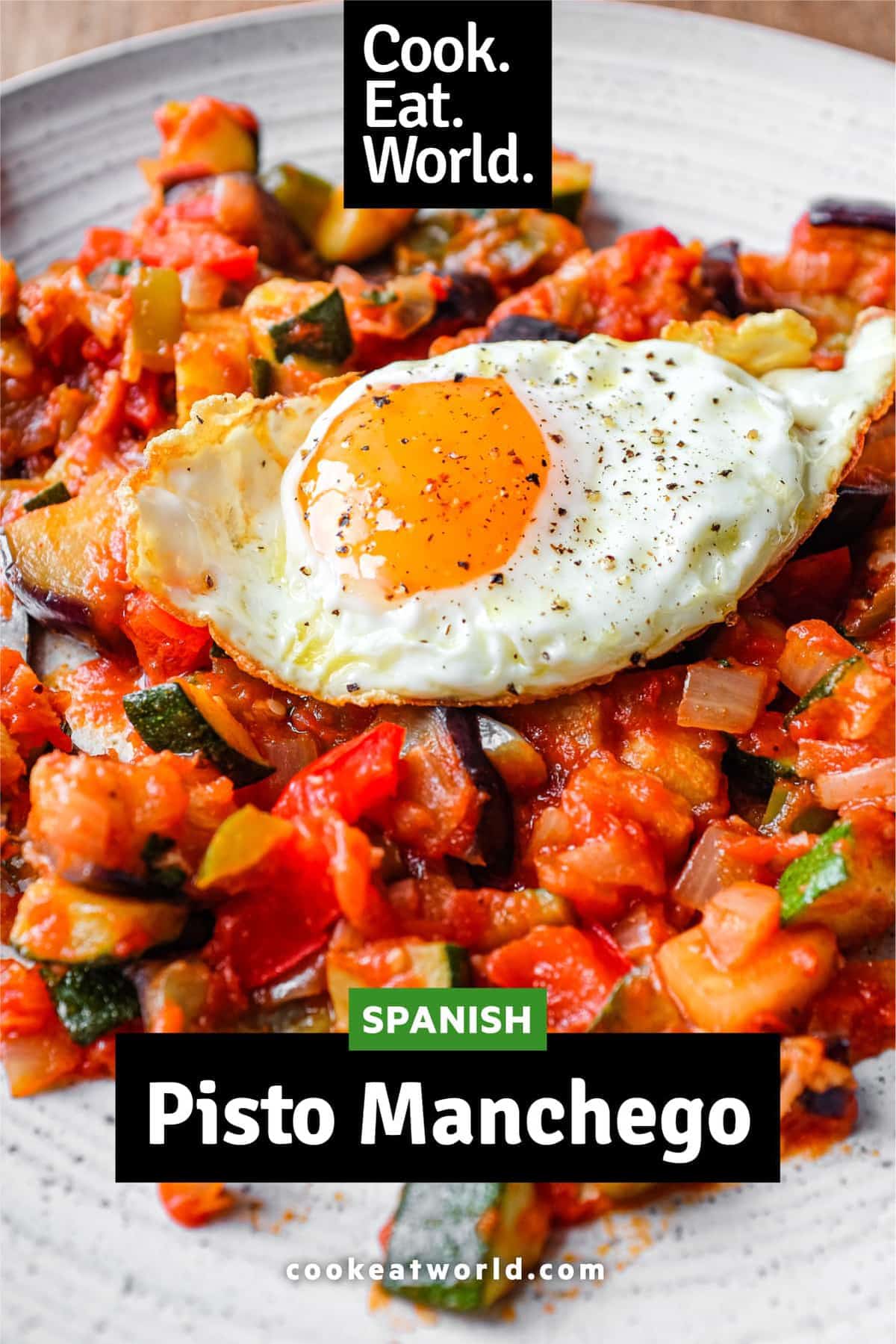
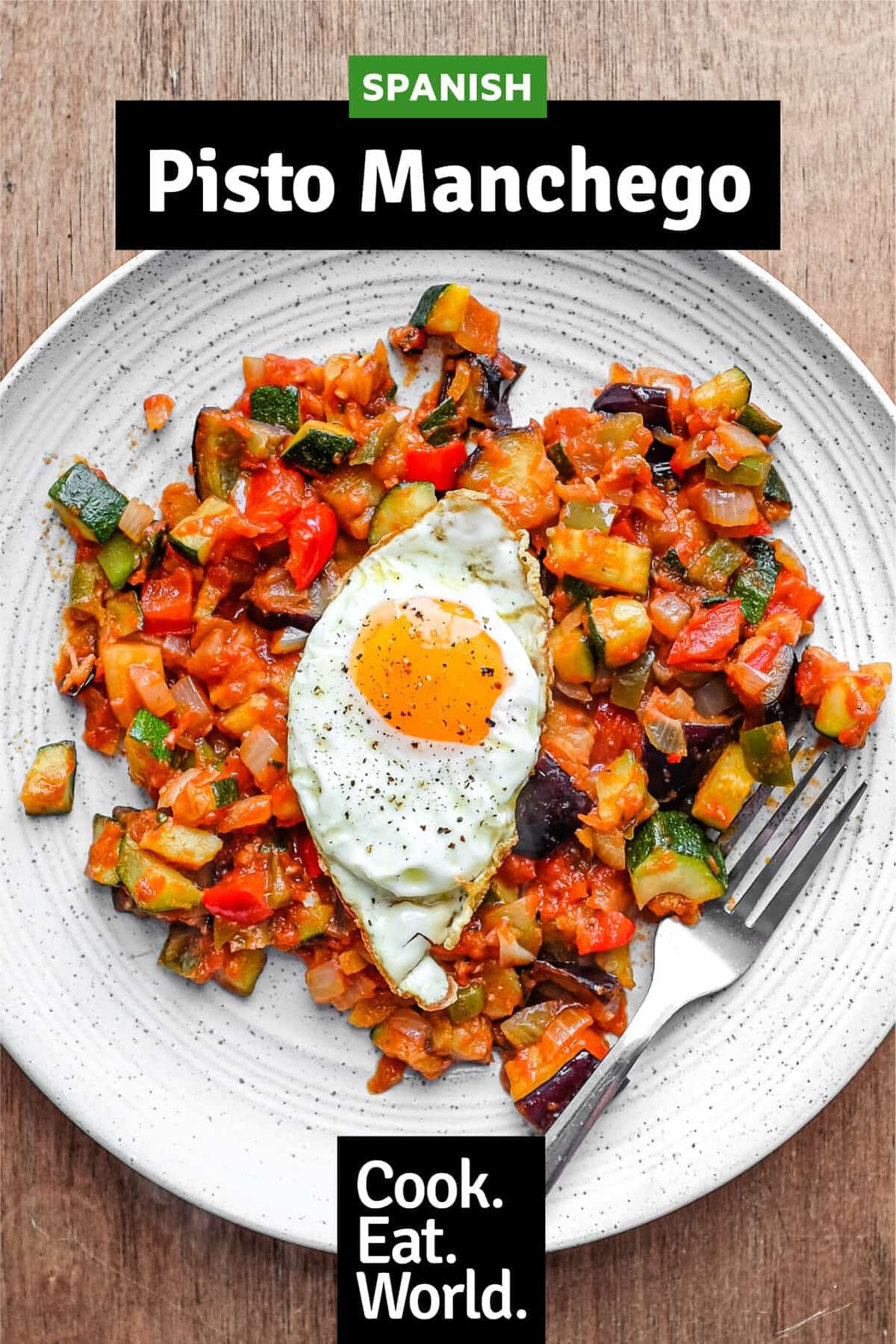
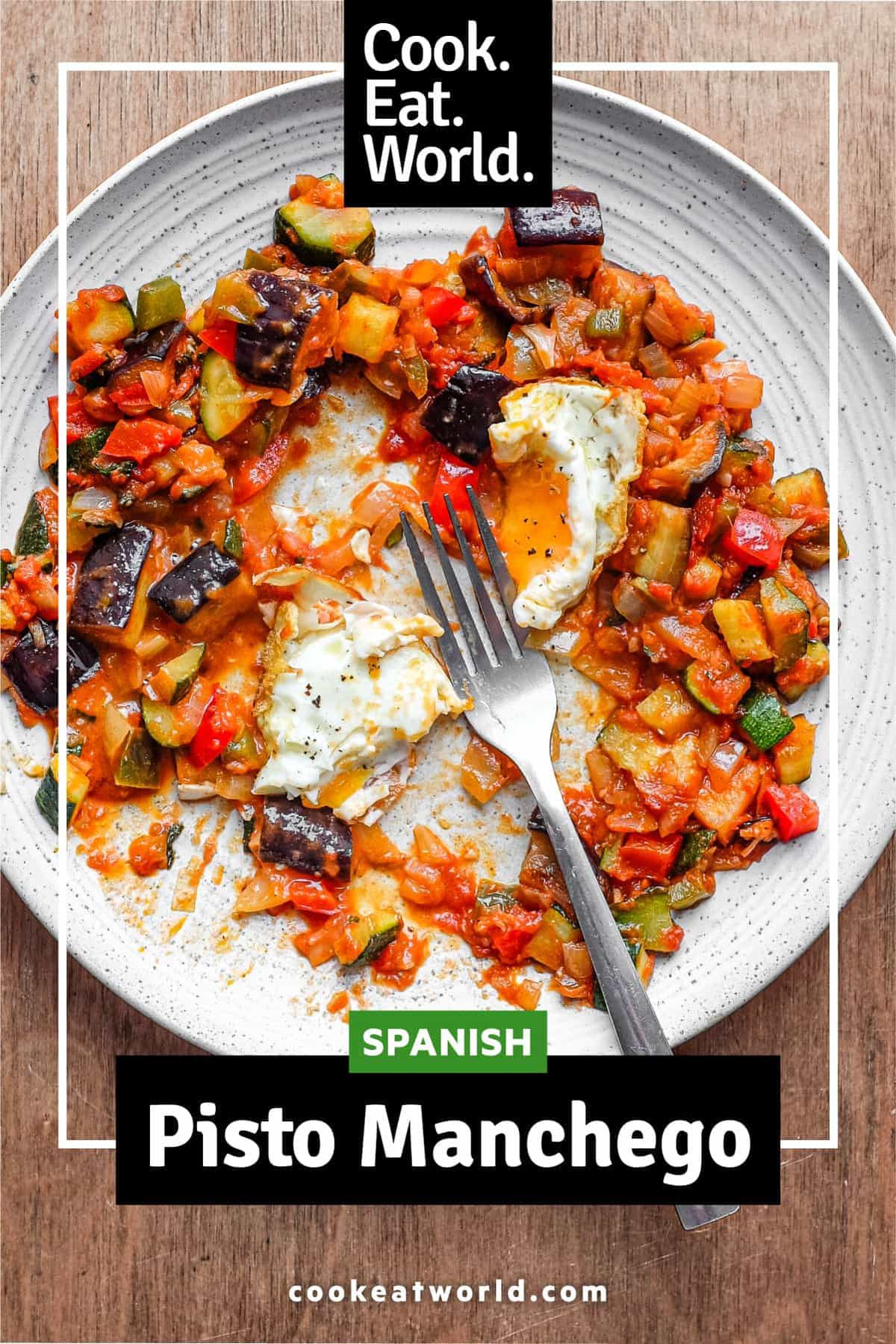
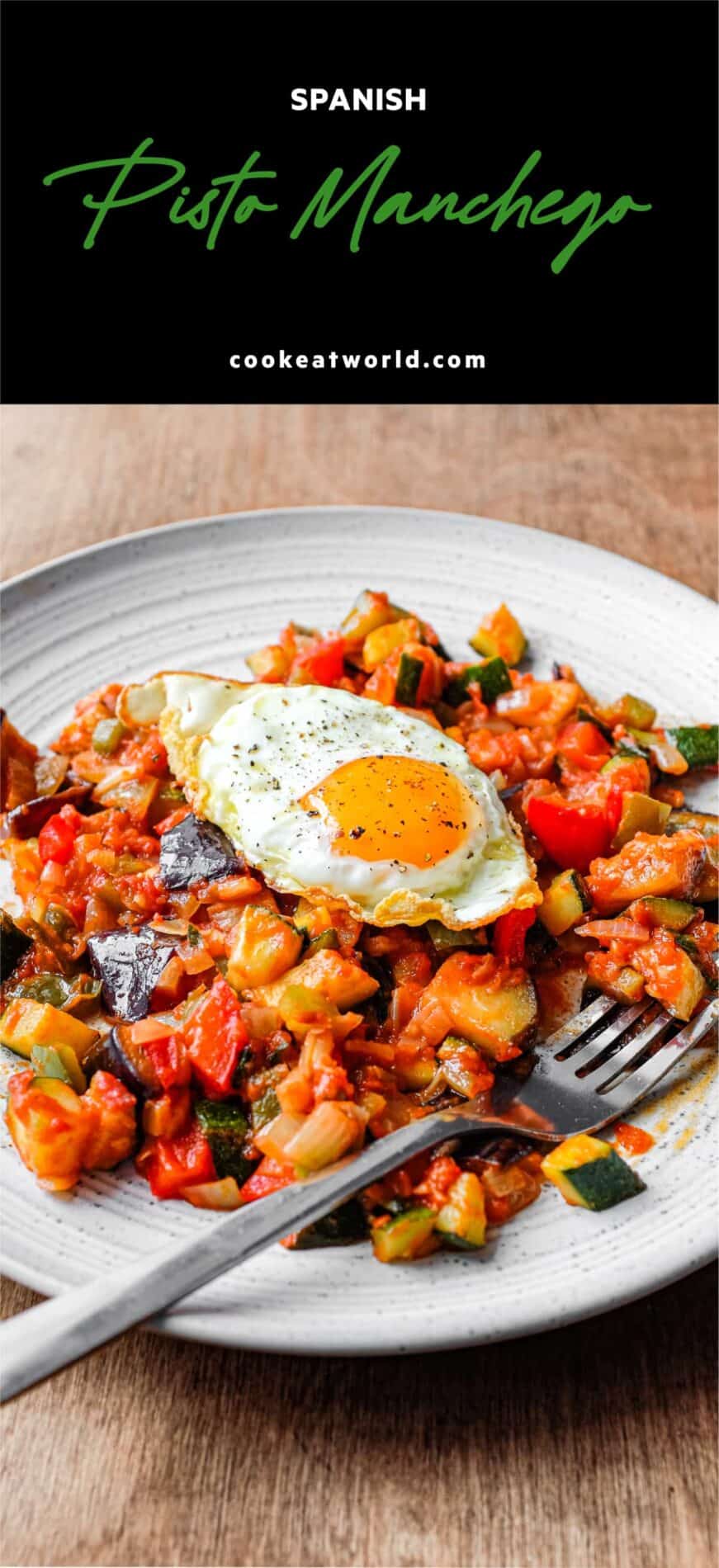

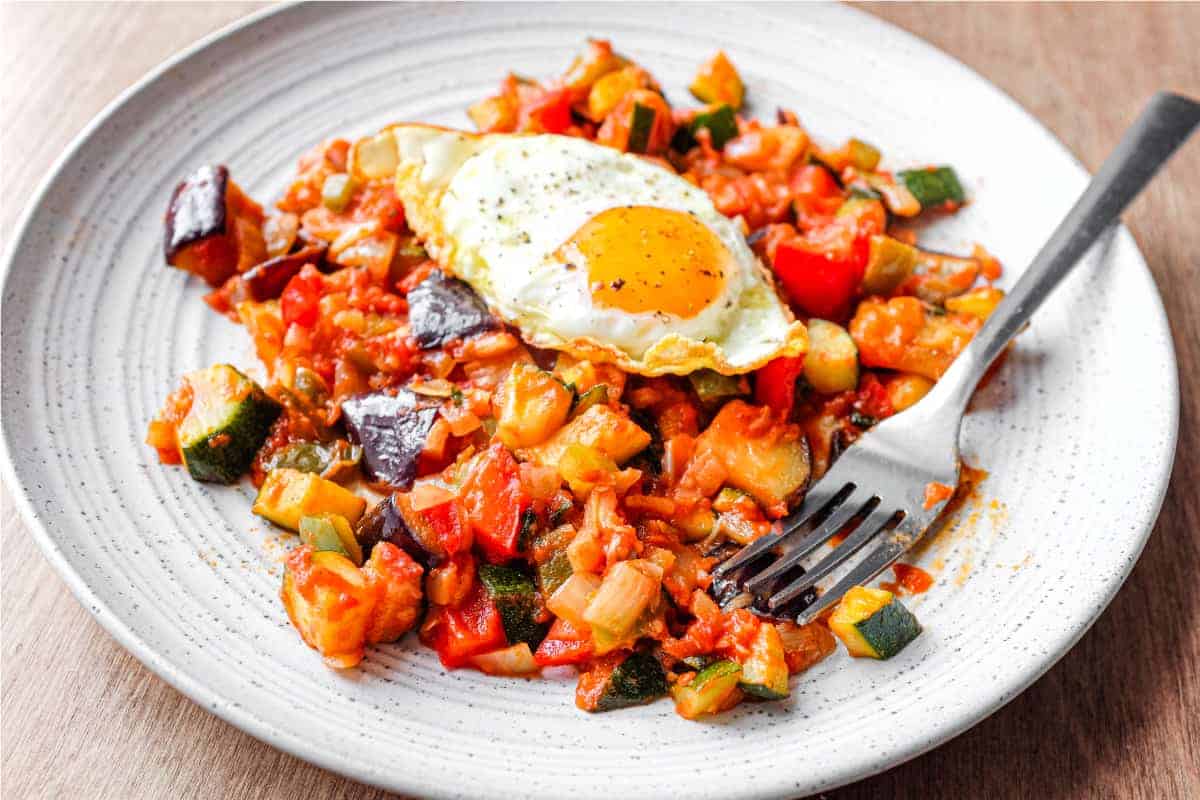
Leave A Comment